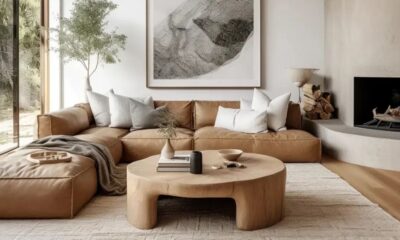FASHION
From Fashion to Design: The Timeless Appeal of Tawny Color Trends
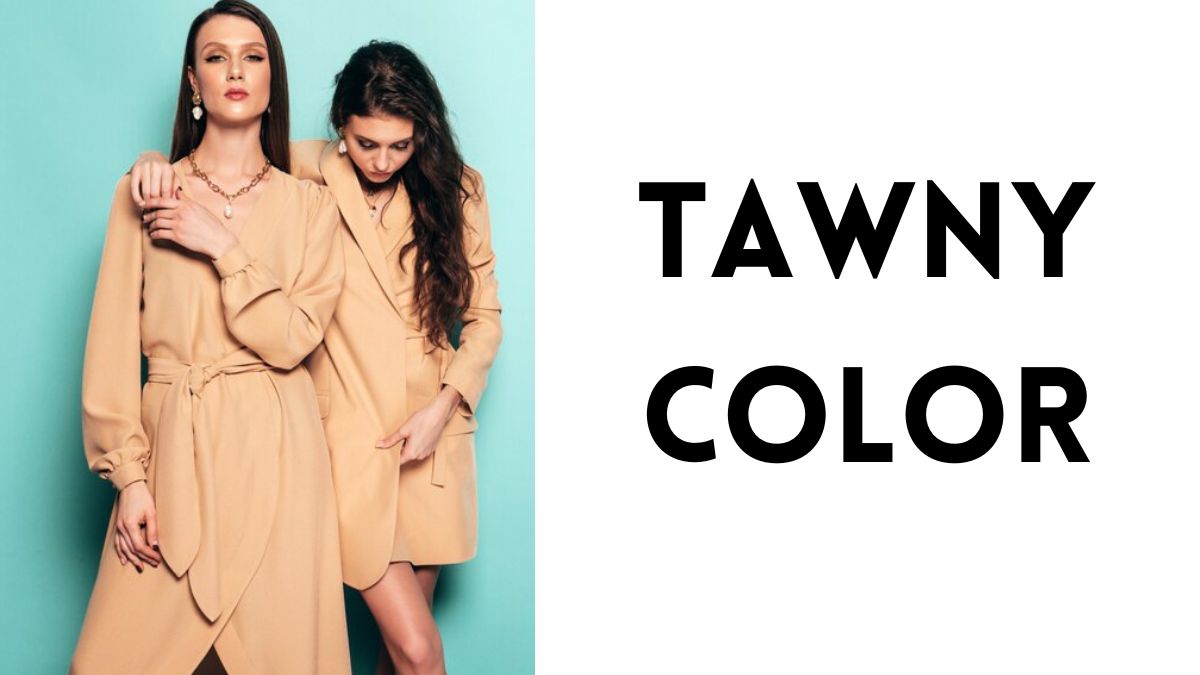
Tawny color, with its warm, earthy tones reminiscent of autumn leaves and sun-kissed sands, has a unique ability to evoke feelings of comfort and style. It stands out as a versatile shade that seamlessly blends into both fashion and design. Whether you’re dressing for an event or revamping your living space, tawny offers a touch of elegance that never goes out of style. In this post, we’ll explore the rich history behind tawny’s rise in popularity, why it continues to captivate us today, and how you can incorporate this timeless hue into your life. Get ready to discover the charm of tawny color trends!
The History of Tawny Color in Fashion and Design
Tawny color, a warm blend of brown and orange, has roots that stretch deep into history. Ancient civilizations favored tawny hues in textiles and pottery, symbolizing earthiness and stability.
During the Renaissance, artists like Titian embraced tawny shades to create depth in their paintings. This rich tone became synonymous with luxury as it adorned the garments of nobility.
The 20th century saw tawny emerge in fashion runways and interior design. Designers recognized its versatility, making it a staple for both casual wear and elegant ensembles.
Tawny’s appeal transcends trends; it’s adaptable yet grounded. From vintage bohemian styles to modern minimalism, this hue continues to resonate across various aesthetics throughout the decades.
Even today, tawny remains a favorite among designers who appreciate its ability to evoke warmth while complementing diverse palettes. Its historical significance enhances its charm in contemporary settings.
Why Tawny Color is Timeless
Tawny color embodies a sense of warmth and earthiness that transcends fleeting trends. This muted hue, reminiscent of autumn leaves and sandy landscapes, effortlessly fits into various styles.
Its versatility makes tawny suitable for both casual and formal settings. Whether in clothing or decor, it creates an inviting atmosphere without overwhelming the senses.
The connection to nature also plays a significant role in its appeal. Tawny evokes feelings of comfort and stability, emotions we often seek in our fast-paced lives.
Additionally, tawny pairs beautifully with other colors. It complements rich jewel tones as well as softer pastels, making it adaptable across seasons and occasions.
Through decades of fashion history, tawny has maintained relevance due to its timeless sophistication. Its understated elegance ensures that this shade will continue to be embraced by designers and consumers alike for years to come.
How to Incorporate Tawny into Your Home Decor
Tawny is a versatile color that can bring warmth to any space. Start small with decorative pillows or throws in rich tawny hues. These accents instantly elevate your living room without overwhelming the palette.
Consider wall art featuring tawny tones, which harmonizes beautifully with both neutral and bold colors. A stunning print can serve as a focal point while keeping the atmosphere cozy.
For larger statements, think about furniture pieces like chairs or ottomans upholstered in tawny fabric. This choice adds depth and character.
In kitchens, tawny cabinetry or backsplash tiles create an inviting ambiance. Pair them with natural wood elements for a seamless look.
Incorporate plants in earthy pots that complement your tawny decor. Greenery alongside warm tones enhances vibrancy and liveliness within your home.
Tawny Color Trends in 2022
Tawny color made a significant splash in 2022, captivating both fashion enthusiasts and interior designers alike. This warm, earthy tone became a go-to choice for creating cozy yet sophisticated spaces.
In fashion, tawny appeared on runways in various textures—from luxurious suede jackets to flowing dresses. Designers embraced its versatility, pairing it with rich jewel tones or muted pastels for striking contrasts.
Home decor also saw an influx of tawny hues. Accent walls painted in this inviting shade transformed living rooms into serene retreats. Accessories like cushions and rugs further enhanced the aesthetic, creating layered warmth that beckoned comfort.
Notably, tawny’s adaptability allowed it to shine across different styles—rustic chic, modern minimalism, and everything in between thrived with this timeless hue. Its presence felt fresh yet familiar; a celebration of nature woven into contemporary design choices.
Celebrity Influence on Tawny Color in Fashion and Design
Celebrities have an undeniable impact on fashion and design trends. Tawny color has found its way into the wardrobes of some of the biggest names in Hollywood.
Stars like Zendaya and Gigi Hadid have flaunted tawny hues on red carpets, showcasing how versatile this warm shade can be. Their choices often inspire fans to embrace earthy tones, making tawny a staple for both casual and formal occasions.
In home decor, influencers such as Joanna Gaines integrate tawny shades into cozy interiors. This creates inviting spaces that feel both chic and timeless.
The appeal of tawny is not just about aesthetics; it’s also about evoking emotions. Celebrities understand this connection, using color to convey warmth and comfort in their designs. As they step out wearing these rich colors or transform their living spaces with them, they set the stage for broader acceptance of tawny trends across various industries.
Tips for Styling with Tawny Color
Tawny color is incredibly versatile and adds warmth to any space or outfit. When styling with tawny, consider pairing it with neutral shades like white, beige, or soft gray for a balanced look.
Layering different textures can elevate your design game. Think tawny suede cushions against a smooth linen sofa. This contrast creates depth and interest.
In fashion, accessorizing with tawny pieces can be striking. A tawny belt or handbag complements denim beautifully while adding an earthy touch to brighter outfits.
Don’t shy away from using tawny as a bold statement color in art or decor accents. Tawny wall art can create focal points that draw the eye effortlessly across the room.
Mix and match patterns too; floral prints in shades of taupe blend harmoniously with tawny elements for a chic vibe without overwhelming your space.
Conclusion
Tawny color holds a unique place in both fashion and design. Its rich, earthy tones evoke warmth and comfort. Whether you’re dressing up or decorating your home, tawny brings a level of sophistication that few colors can match.
The versatility of tawny makes it easy to incorporate into various styles. From bohemian chic to modern minimalism, this color effortlessly complements any aesthetic. It works beautifully with neutrals as well as vibrant hues, allowing for endless possibilities.
As we look towards the future, tawny’s influence remains strong in trends for 2022 and beyond. Celebrities continue to showcase this timeless shade on red carpets and social media platforms alike, further solidifying its status as a must-have color choice.
When styling with tawny, consider mixing textures and materials to create depth in your outfits or decor schemes. This approach not only enhances visual interest but also emphasizes the warm undertones of the coloration.
Understanding how to wield tawny effectively opens doors for creative expression in fashion and interior design alike. Embrace its charm; let it inspire your next project or wardrobe refresh without hesitation.
FASHION
Elevate Your Proposal: The Allure of Custom Engagement Rings in Sydney
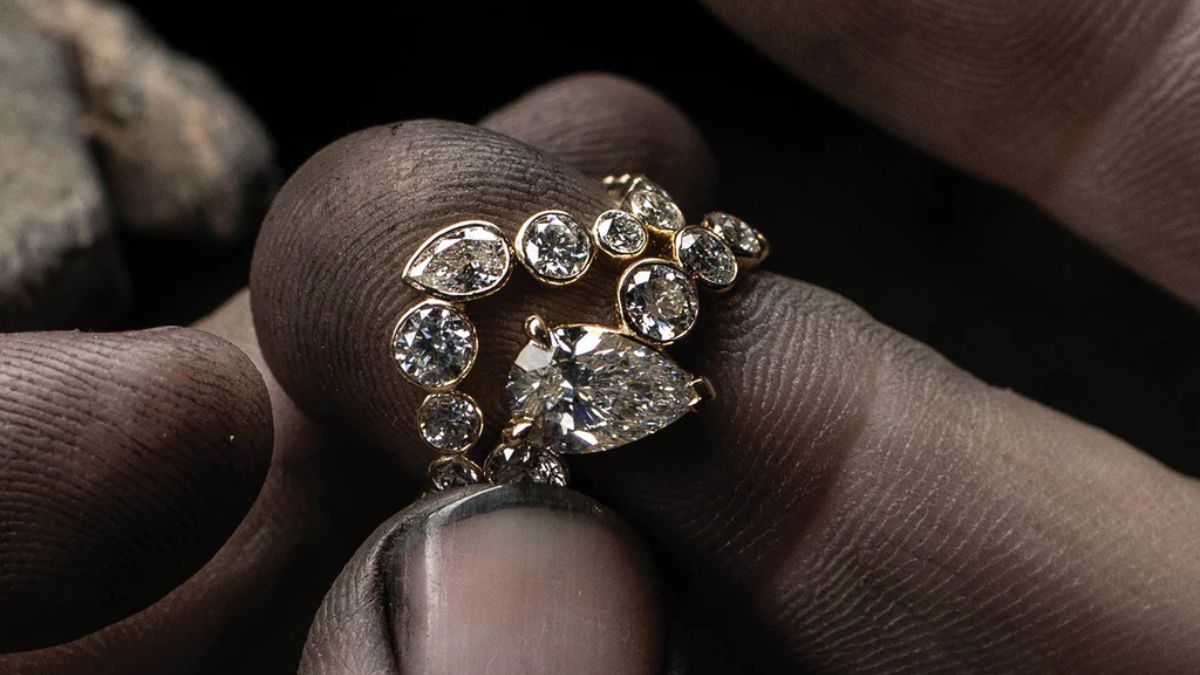
When considering a marriage proposal, the engagement ring holds unparalleled significance. It’s not merely a piece of jewellery but a symbol of love, commitment, and the unique bond shared between two individuals. With the growing demand for personalisation in every aspect of life, it is no surprise that custom engagement rings in Sydney have become the epitome of expressing one’s affection and intent. Sydney, known for its vibrant culture and exquisite craftsmanship, is the perfect place to find a ring that embodies the spirit of your relationship.
Understanding Custom Jewellery’s Appeal
The appeal of bespoke jewellery, especially when it comes to engagement rings, lies in its ability to capture personal tastes, stories, and emotions. The meticulous process of creating a custom engagement ring in Sydney ensures that every detail is infused with meaning and crafted to mirror the individuality of its wearer. Unlike off-the-shelf options, a bespoke ring is an original masterpiece, ensuring that no other person will have the same piece.
The Process of Crafting a Custom Engagement Ring
Creating a custom engagement ring is an intimate journey. It begins with the selection of stones and metals and then moves on to the design aspects, including the ring’s setting, style, and intricate details. Sydney’s talented jewellers collaborate with clients at each step, translating their visions into stunning realities. By engaging in this process, couples are not merely purchasing a ring; they are involved in the artistry and narrative that the ring represents.
Selecting the Right Stones
One of the crucial elements in designing a custom ring is the selection of the right stones. Traditionally, diamonds have been the first choice for many, but there is an increasing trend towards using coloured gemstones to represent personal significance or style. Sydney’s custom ring designers have access to a variety of high-quality stones, ensuring that each gem meets the highest standards of clarity, cut, and colour. From ethically sourced diamonds to rare sapphires, the choices are vast and varied.
Incorporating Personal Design Elements
The opportunity to incorporate personal design elements is what sets custom engagement rings apart. These could be subtle nuances that reflect individual styles or more obvious personalised touches, such as engravings of special dates, initials, or messages that hold deep personal value. Sydney’s bespoke jewellers excel at bringing these design elements to life, making each ring a true reflection of its owner’s personality and the couple’s unique story.
Quality and Craftsmanship
No conversation about bespoke engagement rings is complete without mentioning the impeccable quality and craftsmanship that goes into their creation. Sydney’s master jewellers are renowned for their attention to detail and precision, which ensures that each ring is not only beautiful but also built to last a lifetime. This is essential as an engagement ring is worn daily, and its durability must match its aesthetic appeal.
Collaboration with Experts
Embarking on the custom ring journey invites couples to collaborate with jewellery experts who possess a wealth of knowledge about stones, metals, and current trends. These specialists also offer guidance on maintaining the ring’s beauty over time. Sydneysiders have the advantage of working with skilled professionals who understand the importance of creating a ring that’s practical for everyday wear while remaining exquisitely designed.
A Symbol of Commitment
Custom engagement rings serve as symbols of the commitment one is making. The act of designing a ring specifically for one’s partner can be seen as a gesture that mirrors the intent to create a relationship built upon careful consideration, mutual understanding, and a commitment to navigating life together. The unique nature of a tailor-made ring enhances this sentiment, as it shows thoughtfulness in the choice that extends beyond common trends.
Sustainability and Ethical Considerations
More than ever, buyers are conscious of the environmental and ethical implications of their purchases. Custom jewellers in Sydney are responding to this by ensuring that their practices are sustainable and ethical. From responsibly sourced stones and recycled metals to supporting local businesses, these considerations are integral when designing a ring with a clear conscience.
Investment Value
An often-overlooked advantage of bespoke engagement rings is their potential investment value. Unique pieces of high-quality craftsmanship tend to appreciate over time, making custom rings not only an emotional investment but also a financial one. Sydney’s custom engagement ring market provides not just jewellery but heirlooms that can be passed down through generations.
Lasting Impressions
The purchase of an engagement ring is the beginning of a significant chapter in one’s life journey. The right custom engagement ring, particularly one crafted in the heart of Sydney, carries with it the promise and excitement of a shared future. Not only is it a statement of love, but it also encapsulates the attention to detail and individual flair that makes a relationship unique.
Conclusion
The allure of custom engagement rings in Sydney lies in the opportunity to capture personal stories, create lasting symbols of love, and work with artisans who understand the significance of this pivotal moment. As couples explore the possibilities and embark on the journey of custom ring design, they are not just creating a beautiful piece of jewellery; they are crafting a lasting emblem that will endure as a testament to their relationship.
Create an extraordinary symbol of your love and elevate your proposal with a bespoke engagement ring. By doing so, you ensure that your engagement is commemorated with a piece as exceptional and enduring as the bond it signifies.
FASHION
How Fashionisk.com is Revolutionizing the Way We Dress
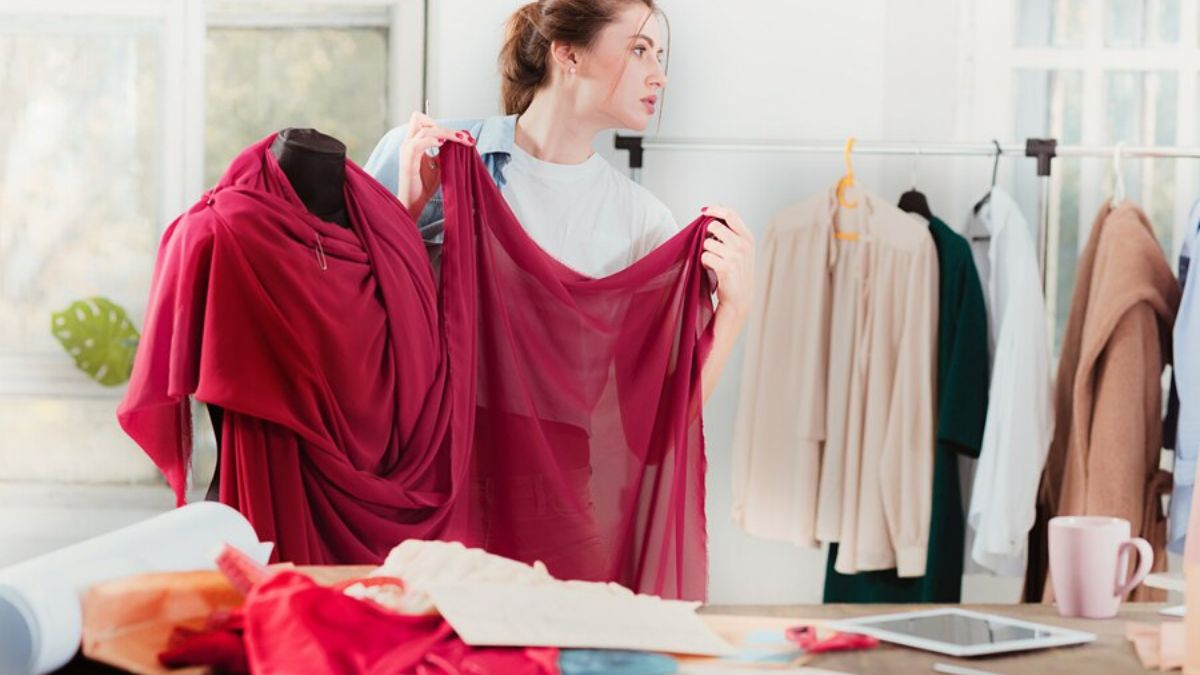
In a world where fashion often feels unattainable, Fashionisk.com is stepping in to bridge the gap between style and accessibility. This innovative platform is on a mission to redefine how we approach our wardrobes, offering solutions that resonate with today’s modern lifestyle. With an emphasis on personalization and sustainability, Fashionisk.com isn’t just another online shopping destination—it’s a game changer poised to transform the way we think about clothing. Say goodbye to cookie-cutter styles and hello to a tailored experience that meets your unique fashion desires!
The Problem with Traditional Fashion Industry
The traditional fashion industry is often criticized for its lack of inclusivity. Many brands focus on a narrow range of body types, leaving countless individuals feeling excluded. This approach not only alienates consumers but also stifles creativity and diversity in design.
Additionally, fast fashion has created a cycle of overconsumption and waste. With trends changing rapidly, many clothing items are discarded after just a few wears. The environmental impact is staggering—landfills overflow with discarded garments while resources are depleted at an alarming rate.
Moreover, the reliance on outsourcing can lead to unethical labor practices. Workers in developing countries often face poor working conditions and minimal pay. This dark side of the industry raises questions about responsibility and accountability among major brands.
These issues highlight the urgent need for change within the fashion landscape—a change that Fashionisk.com aims to address head-on through innovation and transparency.
How Fashionisk.com is Changing the Game
Fashionisk.com is redefining the shopping experience by leveraging cutting-edge technology. This platform empowers users to discover styles that resonate with their personal tastes, making fashion accessible for everyone.
Unlike traditional retail models, Fashionisk.com curates personalized recommendations based on individual preferences. Users simply input their style inspirations, and the algorithm works its magic.
Moreover, this site fosters a community of fashion enthusiasts. It encourages sharing looks and gaining inspiration from others, creating an interactive space where creativity thrives.
The seamless integration of social networking elements transforms how we view clothing choices. No longer just about purchasing items; it’s about connecting through shared passion.
With its intuitive interface and unique approach to curation, Fashionisk.com stands out in a crowded market. It champions individuality while promoting sustainable practices through mindful consumption choices.
Innovative Features and Technology Used by Fashionisk.com
Fashionisk.com is at the forefront of integrating advanced technology into everyday fashion. One standout feature is its AI-driven style recommendations. Users receive personalized outfit suggestions based on their preferences and body type, making shopping a breeze.
The platform also employs augmented reality (AR) to enhance the virtual try-on experience. This allows customers to see how clothing fits without ever leaving home, reducing uncertainty in online shopping.
Additionally, Fashionisk.com harnesses data analytics to track trends and consumer behavior. This insight enables rapid adaptation to market demands while ensuring that users find exactly what they’re looking for.
Moreover, community engagement tools foster collaboration among users. They can share looks and get feedback from peers, creating an interactive fashion ecosystem unlike any other. Each innovative feature works together seamlessly, enhancing user experience while revolutionizing how we approach fashion today.
Impact on Sustainability and Ethical Practices in Fashion
Fashionisk.com is not just about style; it champions sustainability and ethical practices. The platform prioritizes eco-friendly materials, reducing waste by promoting a circular fashion model. Users can access an array of sustainable brands committed to making a difference.
By connecting conscious consumers with responsible designers, Fashionisk.com fosters transparency in the industry. This empowers shoppers to make informed choices that align with their values.
In addition, the site actively supports fair trade practices. Designers featured on Fashionisk.com ensure workers receive fair wages and safe working conditions. This commitment enhances community well-being around the globe.
Furthermore, innovative technologies help minimize environmental impact. From virtual fitting rooms to second-hand markets, every feature promotes smarter consumption habits among users while encouraging less reliance on fast fashion trends.
Success Stories of Fashionisk Users
Fashionisk.com has empowered countless users to redefine their style. Take Sarah, for instance. She was overwhelmed by the chaos of fast fashion but found clarity through Fashionisk’s curated collections. With personalized recommendations, she discovered pieces that truly resonated with her aesthetic.
Then there’s James, a professional who struggled with his wardrobe choices. He turned to Fashionisk and quickly learned how to mix and match items effortlessly. The platform helped him transform from a corporate clone into an individual with flair.
Another inspiring story comes from Mia, an eco-conscious shopper. By using Fashionisk.com, she not only upgraded her closet but also supported sustainable brands. Her wardrobe now reflects her values while keeping her stylish.
These testimonials illustrate just how impactful Fashionisk.com can be in tailoring personal experiences that resonate beyond mere clothing choices.
The Future of Fashionisk.com and the Revolution it’s Bringing
Fashionisk.com is poised to redefine the fashion landscape. With its cutting-edge approach, the platform is set to create a more personalized shopping experience.
Imagine a world where your wardrobe evolves alongside you. Fashionisk.com aims to make that vision a reality. Through advanced algorithms and user-driven insights, it will tailor recommendations based on individual styles and preferences.
The integration of augmented reality could allow users to virtually try on outfits before making purchases. This technology promises not only convenience but also confidence in decision-making.
As trends shift towards inclusivity and diversity, Fashionisk.com champions these values by showcasing a broad spectrum of designers and styles. The future looks bright as more voices enter the conversation about what fashion should represent.
In this rapidly changing environment, adaptability will be key for Fashionisk.com as it continues to innovate while staying true to its mission of empowering consumers through style choices.
Conclusion
Fashionisk.com is more than just a website; it’s a movement that aims to reshape the way we perceive and engage with fashion. With a fresh approach, it tackles the shortcomings of traditional fashion by emphasizing inclusivity, sustainability, and technology. This innovative platform empowers users to express their personal style without compromising on ethical standards.
The integration of cutting-edge technology offers an unprecedented shopping experience. AI-driven recommendations help users find outfits tailored to their preferences while promoting brands committed to sustainable practices. As consumers become increasingly aware of their choices’ impact on the environment, Fashionisk.com stands out as an ally in this journey.
Success stories from satisfied users highlight how Fashionisk.com has transformed lives through personalized styling solutions and access to ethically made clothing options. Each success story reflects a community united by shared values—style infused with consciousness.
Looking ahead, Fashionisk.com is poised for even greater strides in revolutionizing fashion retailing. Its commitment to innovation coupled with its focus on sustainability ensures that it will continue leading the charge towards responsible consumerism in the industry.
By embracing change and redefining norms, Fashionisk.com paves the way for future generations who value both aesthetics and ethics in their wardrobe choices. The evolution of our dressing habits is underway—one stylish choice at a time.
FASHION
Chanel Lambskin: The Ultimate Guide to Luxury Handbags
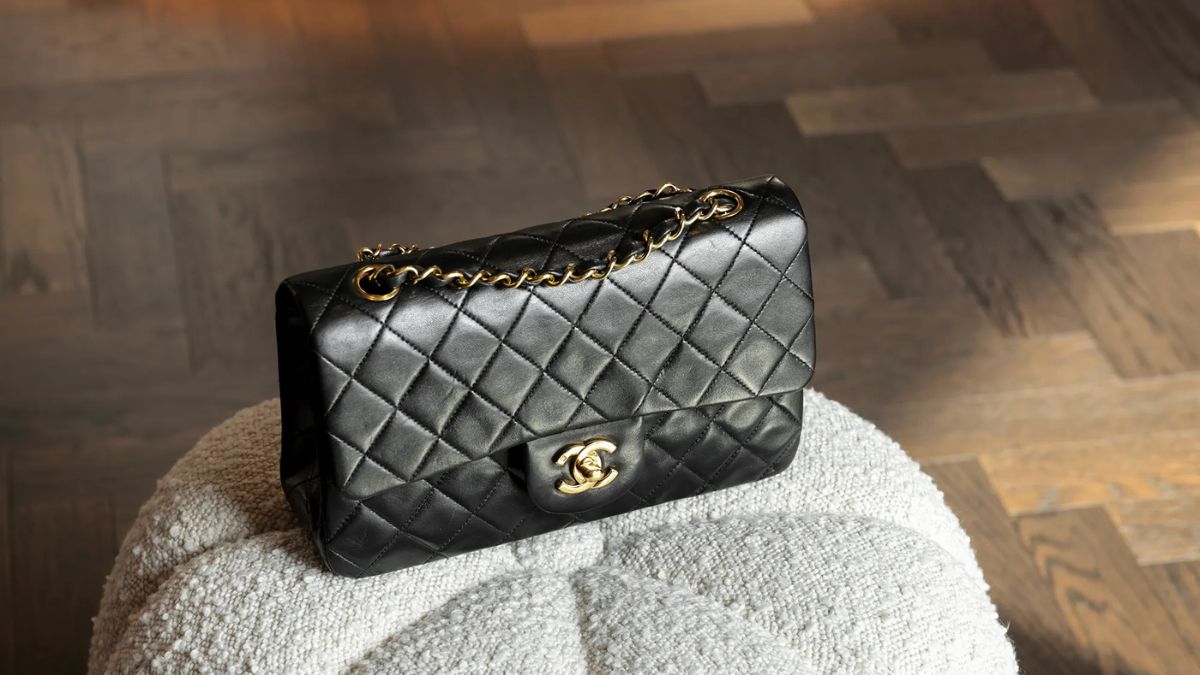
What Makes the Chanel Lambskin Bag So Special?
Understanding Lambskin Leather
Lambskin leather maintains its delicate touch, exquisite softness, and luxurious texture. One can feel this material’s glory on Chanel handbags made from lambskin. It is pulled from the skin of younger sheep, and the processing steps on it are kept to a minimum so that the soft feel and natural lamb skin look are maintained. The outcome is a smooth, supple texture that is sophisticated yet classy. Lambskin is softer compared to other leathers, which means it is more prone to scratches, so attentive and delicate care is a must.
View Chanel Lambskin – LuxuryEvermore details to get into the details.
Comparison, Chanel Caviar Leather
The caviar leather works well with rugged day-to-day use. Unlike brawny caviar, lambskin is softer and prone to scratches yet exudes effortless elegance. Its superb finish makes it a hand-on choice for formal events. While Chanel enthusiasts appreciate the luxurious feel of lambskin, it provides options for those with differing lifestyles. In contrast, caviar offers a practical choice at the cost of lower elegance. The articulation in the two side-by-side comparisons of Chanel’s caviar and lambskin leather unveils the preferences of the targeted customers.
Characteristics of a Chanel Lambskin Bag
A Chanel lambskin bag molds to the hand, as the soft leather feels luxurious to the touch. Smooth and silky to the touch, a lambskin is the channel hallmark, while the precise stitching, iconic quilting, and interlocking CC logo bear its fine craftsmanship. Despite being the most delicate of leathers, it is still designed to last a lifetime, aka “Chronos,” which is timeless and maintained. Essentials like nylon, raingear, or swimwear truly put the classic and seasonal colors on display, providing complementing versatility that styles to both traditional and modern wardrobes.
How to Choose the Perfect Chanel Lambskin Handbag?
Popular Styles: Flap Bags and Top Handle
Chanel’s Lambskin handbags are famous for their signature designs, which include the most popular Flap Bags and top-handle handbags. Flap Bags exemplify ageless beauty and possess the trademark quilted pattern with an interlocking CC clasp. Their portability in multiple sizes makes them suitable for numerous purposes. On the other hand, Top Handle bags have a modern yet timeless look and are created for ease of use without losing the brand’s prestige. It is no wonder that most people prefer the Top Handle as it has a defined shape that makes it more sophisticated and easier to use at the same time.
Size Guide: Small Flap Bag and Jumbo Single Flap
Picking the correct size for a Chanel Lambskin handbag is very important in terms of practicality and style. For frequent travelers, the Small Flap Bag is perfect as it can fit a wallet, phone, and makeup, which makes it ideal for evenings and casual outings. In contrast, the Jumbo Single Flap bag is one of the most spacious bags offered by Chanel, capturing the essence of the brand’s elegance and still having enough room for day-to-day items. Both of these styles offer functionality and relevance for the modern woman with shifts from day to night while retaining their signature style.
Choosing Between Pink Lambskin and Black Lambskin
Choosing the right color is important when buying a Chanel Lambskin handbag, as it should complement one’s style. For instance, Black Lambskin is eternally loved due to its practicality. It goes with every outfit and occasion. Furthermore, it is ideal for people looking to build a versatile wardrobe. On the contrary, Pink Lambskin is known for its chic appeal. It is loved by people looking to add a pop of color while still remaining classy. No matter your preference, both pieces showcase the signature quality and luxurious finesse of Chanel craftsmanship.
Where to Find Chanel Lambskin Bags for Sale?
Official Sources for Chanel Lambskin Bags
The first and best place to purchase an authentic Chanel Lambskin bag is from an authorized Chanel dealer or directly from their online site. These sellers will provide, on warranty alongside support, original products which are free from counterfeit. Furthermore, the official webpage normally has information on the latest collections, their availability, and pricing to help customers make informed decisions.
Trustworthy Vendors Selling Pre-owned Chanel Lambskin Bags
For luxury second-hand shopping, there are numerous vendors and luxury consignment shops selling used Chanel Lambskin bags. Brands like Fashionphile, Rebag, and The RealReal have devoted themselves to selling second-hand Chanel products after authenticating them. A buyer has to check the seller’s reputation and make sure he is given documents to prove that the product is indeed genuine.
Characteristics of Vintage Chanel Products
A buyer has to pay close attention to details such as the stitching on the bag, the logo, and the serial number to differentiate between Chanel Lambskin bags and their vintage versions. The alignment of the logo, the stitching quality, and the bag’s distinguishing serial number are all key features. The bag’s distinctive traits depend on the period in which it was produced, for example, old logo designs and original hardware finishes. Chanel bags undergo different logo designs which makes it easier to determine the era it was produced in. To be sure that the item in question is indeed vintage, one can contact an expert who specializes in Chanel authentication or use third-party evaluation services.
How to Care for Your Chanel Lambskin Bag?
Cleaning Tips for Quilted Lambskin
Like other types of leather, quilted lambskin leather needs gentle cleaning to preserve its delicate structure and unique appearance. Use microfiber cloths when cleaning the surface of the leather, as they are soft and will not scratch or damage it. The use of chemicals and multipurpose leather products should be avoided since they will most likely ruin the finish of the leather. Misshaped and peeled finishes can be avoided by using leather cleaners with a neutral pH balance instead. Light cloth dabbing can be used to lift minor stains on the leather; however, rubbing or scrubbing the surface is not allowed as it would lead to friction marks and discoloration. To keep the bag in pristine condition, it is important to regularly use high-quality lambskin leather conditioners.
How To Store Chanel Handbags For Best Preservation
When it comes to taking care of your Chanel lambskin bag, proper storage is key. Always put the bag back into its original dust bag to keep it away from light and dust that might cause fading or cracking due to prolonged exposure. Do not hang the bag by its straps as it can lead to stress or distortion of the leather over time. Instead, keep it upright in a cool and dry place. Use acid-free tissue paper or a handbag shaper to fill it and maintain its shape. It is also wise to store the bag away from sunlight and humid places to guard against moisture and potential mildew.
Lambskin Leather Care Services
Even with careful use, lambskin leather may accumulate wear, such as scratches, scuffs, and dullness. To treat minor scratches a professional leather spa can restore the feel and look of the lambskin. DIY repairs of such nature are not recommended as it may lead to excess damage if not done properly. Additional lambskin maintenance, like conditioning, spot cleaning, and routine checkups, will delay extensive repair and maintenance services. More significant damages, like hardware and deep surface scratches, require consulting a Chanel repair center. This ensures that precious materials are not used without authenticity, thereby losing face value and preserving the heritage of the handbag.
What Are the Most Sought-After Chanel Lambskin Bags?
Spotlight on the Chanel 19 Collection
The Chanel 19 series is one of the most popular and best-selling modern luxury bags because it is known for its innovative design and style aesthetics. This particular series was introduced in 2019 to celebrate the birth year in conjunction with their trend of calling products by number. Each bag’s unique characteristics comprise its signature oversized diamond quilted pattern and combined metal chain strap of gold, silver, and ruthenium. Coupled with the buttery soft lambskin used for the bag’s exterior, it gives a lightweight feel while exuding ostentatious elegance and luxury. Ranging from totes to belt bags, the collection is designed to be versatile to suit occasions both formal and informal.
The Mini Classic Flap Bag Overview
Chanel is famous for the Mini Classic Flap Bag because of its flawless artistry as a Chanel piece and its chic look makes it more appealing to the people. The lambskin leather bag is small but practical. It has a classic quilted design and a CC turn-lock closure that is synonymous with Chanel. Given its small dimensions, it can be used both as a day and night bag. No matter the color or finish, the Mini Classic Flap Bag is the epitome of sophistication and beauty.
The Boy Bag Features Overview
First launched in 2011, The Boy Bag is a striking redesign of Chanel’s classic pieces. Unlike other Chanel bags, this one has a boxy shape, a chunky chain strap, and a rectangular lock, all of which draw influences from the masculine side of fashion. Just like Chanel herself, this bag means to push boundaries. The Boy Bag comes in a multitude of materials, including lambskin and calfskin, with edgy accents like aged hardware or distressed finishes. Apart from being a fashion statement, every piece also serves a purpose. Spread out across its structured body, the space it offers is sufficient to house a few essential items. This balance between practicality and high fashion has made the bag renowned. Because of its outstanding features, The Boy Bag has emerged as an icon of modern elegance and is regarded as a must-have accessory by fashion lovers around the world.
How to Style Your Chanel Lambskin Shoulder Bag?
Pairing with Outfits: Casual vs. Formal
For each occasion, one must think about their outfit alongside fashion choices while styling their Chanel lambskin shoulder bag. As an example, for casual dressers who like to wear high-waisted denim with a tailored blazer or a midi skirt flowy dress, the lambskin shoulder bag can be incorporated as an effortless elevation. For this case, the shoulder bag can be neutral-toned or pastel-colored. Further, the bag can work as an elegant centerpiece.
Lambskin shoulder bags also work seamlessly for formal events. The bag is perfectly paired with little black dresses and tailored evening gowns. For extensive gowns or luxurious sideline dinners and parties, the shoulder bag can be complimented with metallic finished bags or those enhanced with silver and gold hardware.
Your Flap Bag And More
To compliment the luxurious feeling that comes along with Chanel, Personal style can be displayed by adding a bag charm, custom chain tab strap, or a bag charm. It is possible to customize your bag charm while keeping the class aesthetic by adding silk scarves tied on the strap, which can be placed towards the bag’s front for an elegant vintage flair.
Accessorizing needs balance; a bold flap bag goes great with minimalistic jewelry, while more neutral bag designs can work well with bold jewelry. This guarantees that your outfit as well as the bag are in tandem without one outshining the other.
Chain Shoulder Bag Suggestions
Chain shoulder bags are multifunctional; they complete both casual and chic silhouettes. For daytime use, go for styles with lightweight chains or those with aged hardware, as they exude effortless refinement. These bags work well with soft neutral garments and monochromatic looks, adding understated sophistication.
For evening attire, get Chanel chain shoulder bags with striking finishes such as shiny metallic details or elaborate quilting. These designs are best worn as statement pieces as they will clash beautifully with formal fabrics like satin or velvet. Never forget that the chain length should be in proportion to the outfit and should not restrict movement.
-

 TOPIC5 months ago
TOPIC5 months ago7 Expert Tips For Choosing The Best Basement Renovation Companies
-

 BUSINESS3 weeks ago
BUSINESS3 weeks agoTop 5 Features of Sowix Online That Every User Should Know About
-

 TOPIC5 hours ago
TOPIC5 hours agoGreece Katz Martian: A Cultural Exploration of an Intriguing Figure
-

 TOPIC4 weeks ago
TOPIC4 weeks agoTop Features of BetterThisWorld .com You Need to Know About
-

 FINANCE1 month ago
FINANCE1 month agoHow TraceLoans Can Simplify Your Finances
-

 TOPIC3 days ago
TOPIC3 days agoKashito_Toto Explained: What You Should Know in 2024
-

 TOPIC2 months ago
TOPIC2 months agoExploring Sifangds: The Hidden Gem of Modern Design
-

 TECHNOLOGY2 months ago
TECHNOLOGY2 months agoWhat is 127.0.0.1:62893? Exploring Localhost Port Numbers

